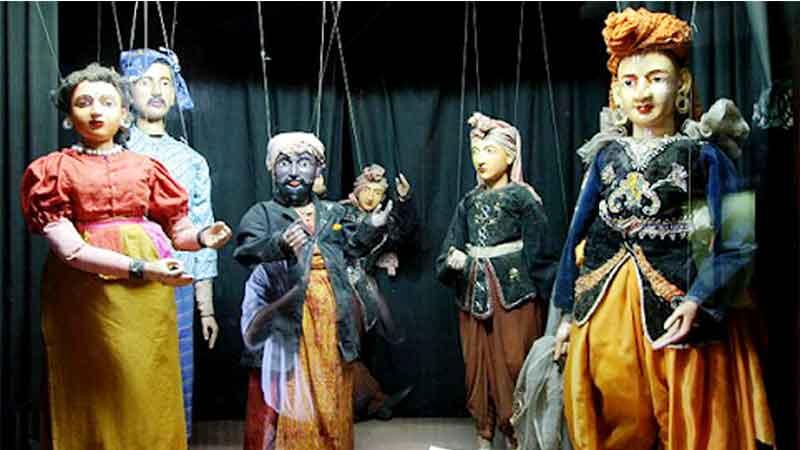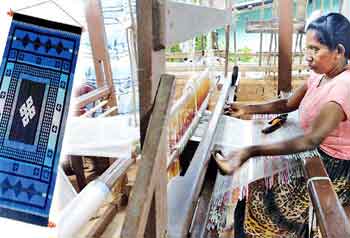
The Sunday Observer initiated this column aimed at resurrecting our indigenous knowledge in spheres such as education, farming, medicine and irrigation; all of which are a part of our heritage.
This week, we will take some time to examine what exactly is heritage. Is heritage only restricted to historical sites? Who are the custodians of this heritage? Is it only a select few who are officially appointed through respective government bodies to look after its protection and conservation or is it the collective responsibility of the people of Sri Lanka? In these times of pandemic it is important to examine insightfully a few of these aspects.
In doing so we must keep in mind that a country that succumbs to amnesia concerning its traditional/indigenous knowledge is indeed heading for a dangerous syndrome caused by a sterilization of sorts that do not allow us to re-produce and benefit from our past because we have knifed it out of our individual and collective consciousness.
On Tuesday, May 12, this writer was in the online audience of an event titled Urumayasaha Covid-19, (Heritage and Covid-19) listening to six eminent personalities who are authorities on Sri Lanka’s diverse facets of heritage.
Today we will focus on one of these aspects: intangible heritage within the context of Covid-19.The talk on intangible heritage in the current pandemic backdrop was given by Dr. B. D. Nandadeva, former Chairman of the panel of Intangible Cultural heritage of the Sri Lanka Arts Council. Falling under intangible heritage is our ancestral knowledge- saampradayikadenuma (which is wide ranging) and includes skills, traditions, beliefs and practices in multitude spheres, ranging from medicine to farming, religion and artistry.
Dr. Nandadeva raised some interesting points on how this exceptional Covid19 situation is impacting our intangible heritage.
Taken up for analysis was the initial stages in mid March when travel was beginning to be restricted where health based fears and some key cultural practices confronted each other.
For example, the age old traditional importance that all religious communities in Sri Lanka, namely Buddhists, Hindus, Christians and Muslims give to the Siripada pilgrimage site and how this was affected when Covid-19 fears sprang amidst the beginning of the Siripada season which saw the custodian monk and pilgrims naturally wanting to continue the tradition, without of course knowing then what kind of pandemic world we were stepping into.
Also highlighted as a part of understanding our intangible heritage, was how the Covid-19 context led to the wide scale chanting of the Ratana Suthraya of the Theravada Buddhist tradition in Sri Lankan temples based on the age old belief that this Suthraya dispels diverse calamities, including famine and disease.
Here it was pointed out that such intangible heritage is kept alive for thousands of generations by the confidence and importance given to it by the people, which manifests in their practice of it.
Among the other dominant religious based intangible heritage traditions highlighted by Dr. Nandadeva was the Bodi Puja which is part and parcel of the Sri Lankan life and psyche and which is now strongly impacted due to the regulations and restrictions necessitated by the Covid-19 pandemic.
The real life situation with regard to the Covid-19 threat to the life of crafts and craftsmen of Sri Lanka at both cultural and economic point of view was raised.
For example, the Dumbarapaduru and how the past two months posed immense difficulty for the mat weaving crafts-persons as they were unable to market their products. The serious threat that Covid-19 poses for all crafts of Lanka was highlighted. Among the other threatened craft traditions taken up for discussion was the Rukada Natya; the string puppetry drama.
These performances, done at community level, convey historically important narratives, Buddhist Jataka Stories and also used for educational purposes to convey morals and social messages, are now under lockdown.
The Covid-19 impact on recent/current religious and cultural festivals of Sri Lanka such as the Sinhala and Tamil New Year, Vesak, Easter, Eid etc., was pointed out, while explaining its impact on the Thorana tradition and other crafts associated with Vesak.
Current steps taken to see that these traditions are not allowed to die during these Covid times were noted, while emphasising the need for Lankan philanthropists and the private sector (despite them also being Covid-19 affected) to join with fellow Lankans to see how we could protect the survival of our heritage.
The focus on intangible heritage ended with Dr. Nandadeva mentioning our indigenous medicine as part of our cultural heritage and a core component of intangible heritage. However he only briefly mentioned it, quipping that it was now a controversial subject in these times of Covid-19.
However, at the beginning of the discussion Heritage and Covid19, its moderator, Dr. Gamini Wijesuriya, former Director of Conservation at the Department of Archaeology and Special Advisor to Director-General of the International Centre for the Study of the Preservation and Restoration of Cultural Property (ICCROM) had shared his two minute video presentation to commemorate International Nurses’ Day that fell on May 12, where he focused on the Buddhist historical importance of caring for the sick and the hospital tradition that originated through it.
He mentioned the fact that the oldest hospital in the world is believed to have been in Mihintale.
At the last November symposium on Common Heritage organised by the Royal Asiatic Society of Sri Lanka (RASSL) and the specific session on Indigenous Medicine, Healthcare and wellbeing in pre-colonial Sri Lanka, many speakers including Dr. Swarna Kaluthota, Deputy Director, Bandaranaike Memorial Ayurvedic Research Institute and Dr. Vajira Seneviratne, senior scientist at the same institution spoke about one of the most vital aspects of our heritage; the medical heritage.
Although the Deseeya Chikitsa (also known as Hela Wedakama or Sinhala Wedakama) which predates Ayurvedha was not spoken of at that forum, the details about the Mihintale hospital and the advanced medical science, equipment and innovations that we had, well before the Western world and its recent medical science was discovered and developed, was focused on.
The close connection we had with the natural world was seen in many of the medical equipment being shaped after diverse birds and other creatures. I recall the kaka kathura that looks like the beak of a crow and the other complex medical instruments. There were also presentations made on the emersion ‘tubs’ of the day for the sick person to be downed in herbs and treated.
Hence, if ever there is a time that we need to resurrect our respect, understanding and knowledge of our ancient medical heritage that lives in all our genes as Sri Lankans, it is now.
We would not be alive today if we were a primitive race without any medical knowledge and who had to wait for the Western world to come and rescue us with their superior science. We are alive today because we bear the great Ravana heritage of our past. I now quote from the book A history of Medicine in Sri Lanka by Dr. C. G. Uragoda, past president of the Sri Lanka Medical Association and a former President of the Royal Asiatic Society.
In the first chapter; Ancient medical practices of Sri Lanka, Uragoda writes as follows: “It is traditionally believed that Ravana, the prehistoric king of Lanka of Ramayana fame was well versed in medical lore. It is mentioned that he represented Sri Lanka at a medical conference held in India during his time.”
“Ravana is believed to have been the author of several books on medicine, the best known of which were Arkaprakasaya, Nadivignanaya, Kumarathantraya and Udishasastraya.”
Uragoda says that such premise of authorship rests on weak ground but nevertheless does not at any point decry the efficacy of the ancient Lankan medical practices.
In the 2nd chapter, Medicine under Sri Lankan Kings, he points out that Buddhist hospitals in India existed before the invasion of Alexander.
“It is to Gautama and his followers that we owe, apparently, the hospital idea. There is no evidence that hospitals existed in Assiriya, Babylon, and early Egypt though their medical systems were older than Ayurvedha. Neither did the Chinese have hospitals.
The idea of creating hospitals had grown up gradually and spread over many distant countries, from Burma, Siam and Ceylon to Syria, Persia and Egypt and the whole of Western Europe, excepting perhaps Russia…In Ceylon and Burma they (hospitals) seem to have been ubiquitous,” points out Dr. Uragoda.
In our last week’s column it was pointed out that Sri Lanka has been one of the most self sufficient nations with regard to medical expertise and that we still have many Weda Mahattayas around the country who do not get the respect they deserve at national level. We also pointed out that any calamity can be overcome and transformed to be one of opportunity, and that we could, if we use acuity and rationality, make this crisis a watershed in Sri Lankan history where it could be one day said that the Covid-19 pandemic was a time of indigenous knowledge resurgence in this nation. This writer wishes to conclude this column by reiterating the above point.
About the author:
Frances Bulathsinghala cultivates trees in the Central Province using only indigenous methods and promotes indigenous knowledge in schools. She is currently working on an academic paper on Indigenous Knowledge and Mass Media as well as a book on the link between HelaWedakam and Agro Forestry.
In 2018 and 2019 she introduced the concept of Edu Tourism linking it to indigenous knowledge and the Gurukula system, published as abstracts in the conference preceeding publication of the International Tourism Research Conference held in Colombo.
She has opened her collection of books, totalling to over 15,000 as a library in Kandy. She is a curricula writer and visiting academic at a National University in Sri Lanka.
As a curricula writer she is currently attempting to introduce a new subject on Indigenous Knowledge and Mass Communication. She is affiliated with several South Asian publications.
